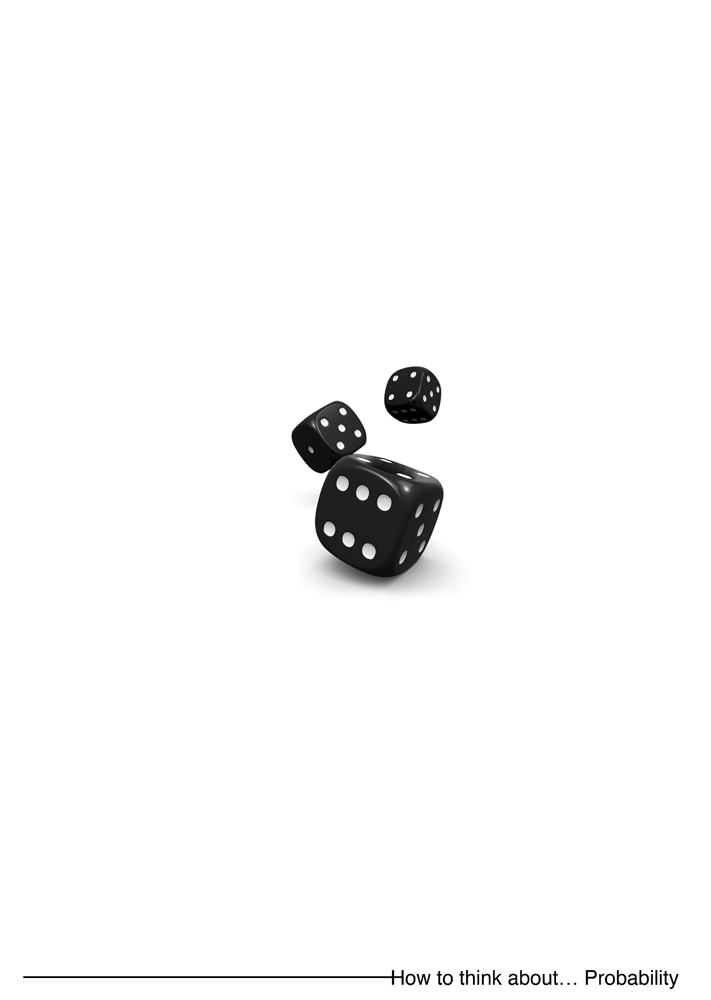
How to Think about Probability
Probability is a measure of the likelihood of an event occurring. To think about probability, it is important to understand the basic concepts of sample space, events, and probability measures. One should also be familiar with the diverse types of probability, such as classical, empirical, and subjective probability. Additionally, it is helpful to understand basic probability rules and theorems, such as Bayes’ theorem and the law of total probability. To gain a deeper understanding of probability, it is also important to study and work with real-world examples and applications.
When thinking about probability, it is important to understand that it is a quantitative measure of the likelihood of an event occurring. The basic concepts to understand when thinking about probability are sample space, events, and probability measures.
Sample space is the set of all possible outcomes of a random experiment. For example, if you are rolling a fair die, the sample space would be {1, 2, 3, 4, 5, 6}.
Events are subsets of the sample space, representing specific outcomes or sets of outcomes that we are interested in. For example, rolling a 2 on a fair die is an event.
Probability measures assign a numerical value, between 0 and 1, to each event, indicating how likely it is to occur. The probability of an event is defined as the number of favorable outcomes divided by the number of possible outcomes. For example, the probability of rolling a 2 on a fair die is 1/6.
There are different types of probability: classical, empirical, and subjective probability.
- Classical probability is based on the assumption that all outcomes are equally likely, it is the ratio of the number of favorable outcomes to the number of possible outcomes.
- Empirical probability is based on the relative frequency of an event in a large number of trials. Subjective probability is based on one’s personal belief or degree of certainty about an event.
It is also important to be familiar with basic probability rules and theorems such as:
- Addition rule of probability: P(A or B) = P(A) + P(B)
- Multiplication rule of probability: P(A and B) = P(A) * P(B)
- Complementary rule: P(not A) = 1 – P(A)
- Bayes’ theorem: P(A|B) = P(B|A) * P(A) / P(B)
Probability can be used to model and solve real-world problems. A good way to gain a deeper understanding of probability is to study and work with real-world examples and applications such as statistics, finance, quality control, weather forecasting, and many more.
In summary, thinking about probability involves understanding the basic concepts of sample space, events, and probability measures, being familiar with the different types of probability, and knowing the basic probability rules and theorems, as well as studying and working with real-world examples and applications.
There are several strategies that can be used to think about probability:
- Define the sample space and events clearly: Understand the underlying random experiment and the set of all outcomes. Define the specific events or outcomes that you are interested in.
- Use the rules of probability: Familiarize yourself with the basic rules of probability, such as the addition and multiplication rules, and use them to calculate the probability of different events.
- Use visualization: Use diagrams, such as Venn diagrams or tree diagrams, to help you understand and visualize the relationships between different events and outcomes.
- Think in terms of relative frequencies: When working with empirical probability, think in terms of relative frequencies, such as the proportion of times that an event occurs out of a large number of trials.
- Use conditional probability: Think about how the probability of one event is affected by the occurrence of another event, using conditional probability.
- Use probability distributions: For many types of data, a probability distribution can be used to model the data and make predictions. Familiarize yourself with common probability distributions, such as the normal distribution and the binomial distribution, and know when to use them.
- Practice with real-world examples: To gain a deeper understanding of probability, practice with real-world examples and applications.
- Be aware of the limitations of probability: Probability is a useful tool for understanding and making predictions about randomness and uncertainty, but it is not always applicable and should not be used to make definitive statements about the future or certain events.
By following these strategies, you can develop a deeper understanding of probability and be better equipped to use it to solve problems and make decisions.

- GOT QUESTIONS?
- Email Us
- designstudio@carlossimpson.com
- Call Us
- +44(0)7856279217
- Don’t Forget to Follow the “BE(YOU)FULL” project on social media.
Categories: UNDERSTANDING HAPPINESS, UNDERSTANDING POSSIBILITIES, UNDERSTANDING PROVOCATION
Sorry, comments are closed for this item.
